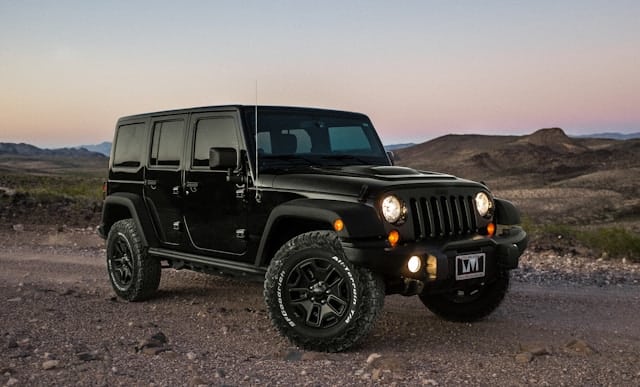What Are the Best Strategies for Wiring Auxiliary Lights on a Jeep Wrangler?

Auxiliary lights are an essential feature for your Jeep Wrangler, especially when driving in foggy conditions or during off-road adventures under low light. With more powerful and efficient lighting options like LED lights available, rewriting or upgrading your Wrangler’s lighting system is a common task for many enthusiastic Jeep owners. We will break down the best strategies for wiring auxiliary lights, from understanding the wiring diagram, selecting the right relay and switches, to the actual process of wiring.
Understanding Your Jeep’s Wiring Diagram
Before you begin your wiring project, the first step is to understand your Jeep’s wiring diagram. This diagram is like a roadmap—it shows you how the multiple wiring systems in your Wrangler interact and where each wire is intended to go.
Cela peut vous intéresser : What Are the Benefits of Using a High-Quality Fuel Injector Cleaner?
It’s possible to find a wiring diagram for your specific model online through various forums where other Jeep owners post and reply to threads. The knowledge of fellow members can also come in handy when you’re trying to troubleshoot or clarify certain steps in the process.
Once you have a clear understanding of the wiring diagram, you’re ready to start preparing for your wiring project. This includes choosing the right wire, relay, and switches for your auxiliary lights.
A voir aussi : The NZeTA Assistant Mobile Application: Fast, Free and Efficient
Choosing the Right Wire, Relay, and Switches
The next step in preparing for your wiring project is selecting the correct wire, relay, and switches for your auxiliary lights. The right components will ensure that your lights function optimally and that the wiring process is as smooth as possible.
When choosing a wire for your auxiliary lights, take into account the power needed for your lights and the length of the wire. High power lights like LED will require thicker wires to handle the load.
Relays are essential components in your Wrangler’s wiring system. They act as the bridge between the switch and the light, allowing the high power required by the lights to bypass the switch. This prevents any potential overheating issues that could lead to a fire.
The switches you choose will determine how your lights function. For auxiliary lights, you may want to consider a three-way switch that allows you to toggle between off, low beams, and high beams. You can also find switches that allow you to control multiple lights independently.
Remember to check on forums for recommendations from other Jeep owners. They can provide firsthand accounts and feedback that can guide your selection process.
Wiring Your Auxiliary Lights
With your components selected and a clear understanding of your wiring diagram, you’re ready to start the actual wiring process. This process involves connecting your lights, relay, and switch using your chosen wire.
First, you’ll need to connect your lights to the relay. This involves running a wire from the positive terminal on your light to the output terminal on your relay. Then, you will wire from the negative terminal on your light to the ground.
Next, connect your relay to the switch. The input terminal on your relay should be connected to the power source, while the control terminal should be connected to your switch.
Finally, connect your switch to the power source. This involves running a wire from the power terminal on your switch to the power source in your Jeep. The grounding terminal on your switch should then be connected to the ground.
By following these steps, you should have a functioning auxiliary light setup on your Jeep Wrangler.
Troubleshooting Your Auxiliary Lights
Even with careful preparation and attention to detail, there’s a chance you may encounter issues with your auxiliary lights once you’ve completed your wiring project. If this happens, don’t worry—there are common troubleshooting strategies you can use to identify and resolve the problem.
If your lights aren’t turning on, check your connections and make sure they’re secure. Loose wires are a common cause of non-functional lights.
If your lights are flickering or not providing consistent light output, this could be a sign of an overloaded circuit. This usually happens if your wires are not thick enough to handle the power required by your lights.
Remember, when troubleshooting, the knowledge of fellow Jeep owners on forums can be a valuable resource. They can provide insights based on their own experiences and might be able to help you pinpoint the issue more quickly.
In the end, wiring auxiliary lights on your Jeep Wrangler can be a rewarding project. It allows you to enhance the functionality and safety of your vehicle while also giving you a deeper understanding of your Wrangler’s electrical system.
Wiring Harness and Additional Components
Once you have your auxiliary lights, wire, relay, and switches selected, you might also need a wiring harness and other components like a fuse and inline fuse holder. These items can further enhance the safety and efficiency of your auxiliary lights system.
A wiring harness simplifies the process of wiring your auxiliary lights. It is a pre-assembled unit that includes wires, connectors, relay, fuse, and sometimes even the switch. Simply plug in the respective parts as described in the previous section and your lights should work. However, if you want more customization in your wiring, you may choose to assemble your own wiring system instead of using a pre-assembled wiring harness.
Fuses are critical safety components in any electrical system, including that of your Jeep Wrangler. They protect the circuit from being damaged by excessive current flow. It’s advisable to use a fuse with an amperage rating just slightly higher than the maximum current draw of your lights. This way, if the current draw exceeds the fuse’s rating, the fuse will blow, saving the rest of the circuit.
An inline fuse holder houses the fuse safely within your wiring system. It allows for easy replacement of the fuse if it blows. Make sure to choose a fuse holder that matches the size and type of the fuse you’re using.
Now, you are ready to wire your fog lights, high beams, or any other auxiliary lights for your Jeep Wrangler. Remember, it’s always best to double-check everything before turning on the power to your newly wired auxiliary lights.
Conclusion: Wrapping up Your Auxiliary Lights Project
Getting the best lighting for your Jeep Wrangler requires good planning, the right components, and careful installation. Understanding your Jeep’s wiring diagram and selecting the right wire, relay, and switches are the initial steps to ensuring a successful project. A wiring harness, fuse, and inline fuse holder might also be necessary to enhance the safety and efficiency of your lighting system.
When wiring your auxiliary lights, remember to connect your lights to the relay first, then the relay to the switch, and finally the switch to the power source. If things don’t work out as expected, don’t panic. Troubleshooting is part of the process, and loose connections or overloaded circuits can be common issues.
The forum members of various Jeep Wrangler communities can be incredibly helpful in this journey, providing firsthand experiences, recommendations, and support. Make the most of these resources.
Wiring auxiliary lights on your Jeep Wrangler can be a fulfilling project, enhancing not just the aesthetics of your vehicle, but also its functionality and safety. Whether you’re installing fog lights, LED fog lights, a light bar, or high beam driving lights, the process remains the same. So, grab your wiring harness, relay, toggle switch, and set of lights, and get started on illuminating your off-road adventures.
